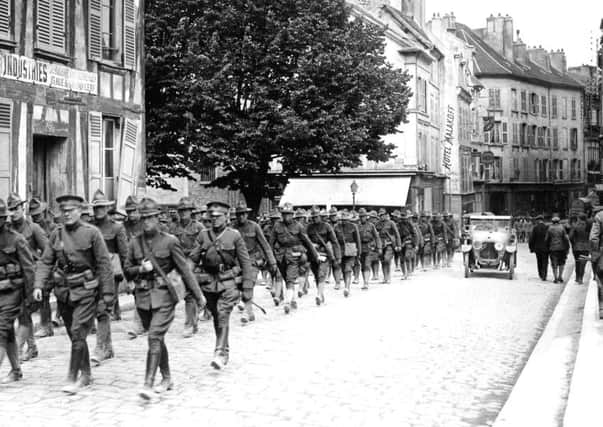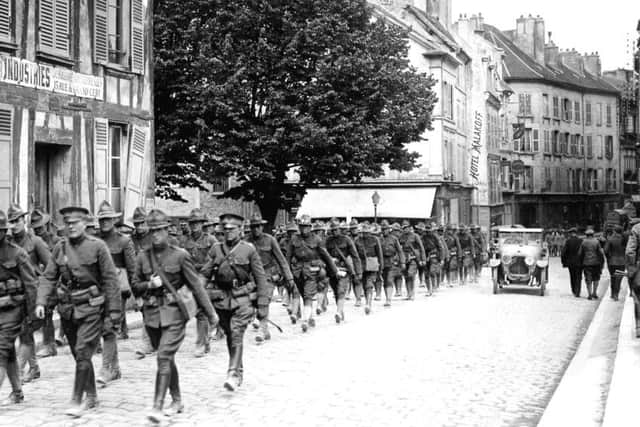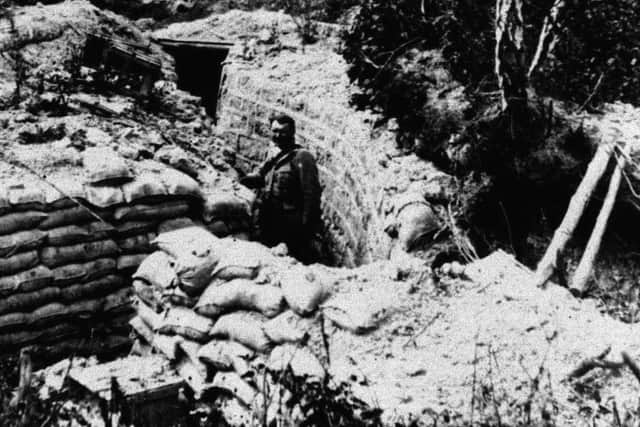The day the United States entered the First World War and the tide turned against Germany


When war broke out in 1914, the United States wanted little to do with what had started as a European conflict.
It was more concerned with its fractious dispute with Mexico. But within three years the US joined forces with Britain and France and under the command of General Pershing sent more than two million American soldiers to fight on the battlefields of northern Europe.
Advertisement
Hide AdAdvertisement
Hide AdThe United States declared war against Germany on April 6, 1917, and one of the reasons often cited for triggering this is the interception of the Zimmermann Telegram – a secret diplomatic communication in January that year proposing a military alliance between Germany, Mexico and Japan in the event of the US entering the war against Germany.


By this point German U-boats had sunk a number of American ships bound for Britain and high profile incidents such as the sinking of the Lusitania passenger liner in 1915 had sparked outrage.
However, Professor Holger Afflerbach, chairman of Central European History at the University of Leeds, says it was Germany’s declaration of unrestricted submarine warfare, enacted on February 1, that proved to be the tipping point.
To the casual observer it might appear that the US was destined to enter the conflict, but this wasn’t the case. “President Wilson probably entered the war reluctantly and would rather have stayed neutral. But the feeling was that German provocation left the United States with no alternative,” says Prof Afflerbach.
Advertisement
Hide AdAdvertisement
Hide AdGermany’s political and military leaders were divided about what to do. In December 1916, they had offered peace terms to the Allies via neutral America, but these were roundly rejected.


This left Germany with a dilemma. It could either continue to negotiate and try to end what had already been a cataclysmic conflict, or push on in a bid to land a decisive blow.
“It was hotly debated by the German leadership. Some in the government and many civilians wanted to negotiate, but military leaders like Hindenburg and Ludendorff said that stabilising the Western Front depended on its navy preventing raw materials from the United States getting to Britain. The belief was that the only way to defeat Britain was by taking the gloves off, which mean unrestricted submarine warfare.”
The German navy estimated that if British shipping was systematically targeted then Britain would be forced to sue for peace within six months.
Advertisement
Hide AdAdvertisement
Hide Ad“Germany was facing a food crisis itself as a result of rationing and the fear was that people would starve to death if the war didn’t end quickly, and the only way to do that was following the navy’s proposal. But it was a big gamble.”


Just over a month later Russia, which was on the cusp of a bloody civil war, agreed a peace deal with Germany.
“A fight against France, Britain and Italy would have been manageable for Germany and it would have probably ended in a draw. Neither side was likely to get a decisive victory and at some point both sides would have had to settle for peace.
“But Germany lost the war the day it declared unrestricted submarine warfare because that decision brought America into the war.”
Advertisement
Hide AdAdvertisement
Hide AdThe United States was already a global superpower by the time the conflict started but hitherto its policy, certainly in Europe, was based around isolation rather than intervention.


“Many historians talk about contemporary history starting in 1917 and that is because of two major events,” says Prof Afflerbach. “One was the Russian Revolution and the other was the United States entering the war and becoming a global power on the world stage.”